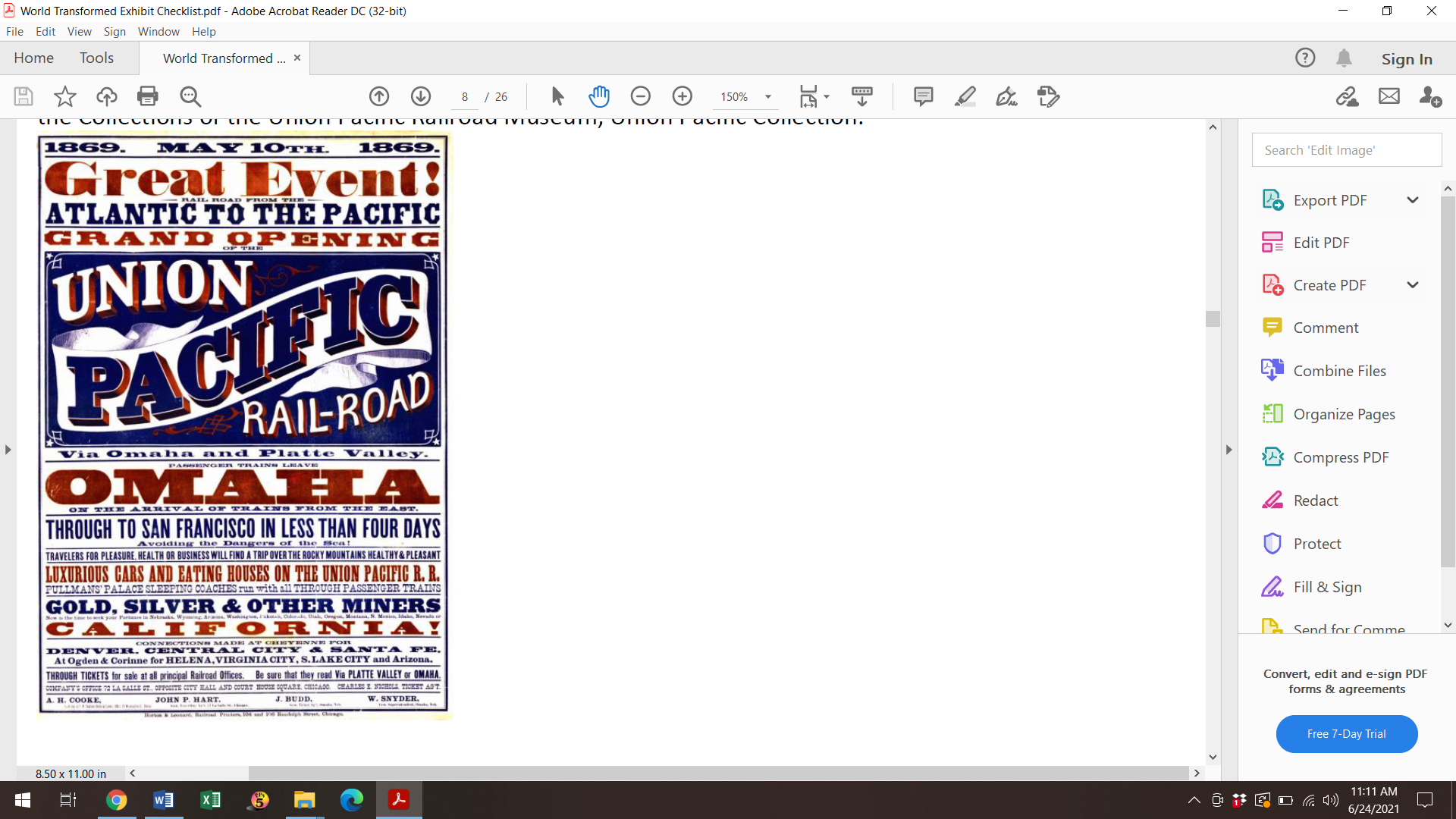Some information may be outdated.
On May 10, 1869, the Golden Spike was driven into the railroad at Promontory Summit, Utah, completing the once-unimaginable rail line that crossed the continent and dramatically shaping America’s history. The Transcontinental Railroad, crossing formidable terrain to link the coasts, was a tremendous engineering achievement and a major factor in the nation’s westward expansion.
A temporary exhibit now on display at the Moab Museum explores this history, tracing the story of its creation and of the predominantly Chinese labor force that undertook most of the labor. Railroad construction was an arduous and dangerous undertaking, and an estimated 75% of the laborers who built the railroad were Chinese immigrants. These workers faced dangerous working conditions, racial discrimination, and obstacles in their efforts to become citizens.
The exhibitions on display include A World Transformed: The Transcontinental Railroad in Utah and selections from Through Toil and Labor: The Forgotten History of Utah’s Chinese Railroad Workers. These exhibits, which tell stories through photos, maps, lithographs, objects, and narratives collected from museums, archives, and libraries across the country, come from the Utah Division of Arts and Museums’ Traveling Exhibit Program and are on display at the Moab Museum through Autumn 2021.
The Moab Museum is dedicated to sharing stories of the natural and human history of the Moab area. For more information, visit www.moabmuseum.org.
Appreciate the coverage? Help keep local news alive.
Chip in to support the Moab Sun News.





